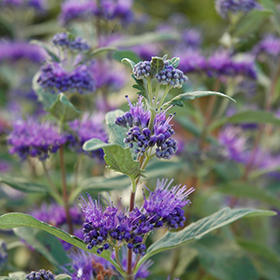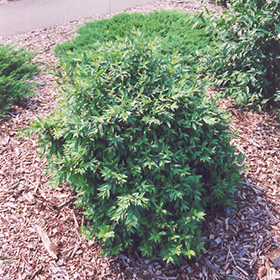Description
Growth & Care
| USDA Plant Hardiness Zone | 5b |
| Growth Rate | Average |
| Recommended Pruning Method | Prune After Flowering |
Foliage
| Foliage Type | Deciduous |
| Fall Color | Yellow |
| Plant Form | Spreading |
Flowers
| Flower Period | Winter, Spring |
| Flower Color | Yellow |
| Flower Fragrance | High |
Additional Categories
| Additional Category | Witch Hazel |
| Landscape Application | Accent, Massing, Screening, Garden |
Details
Planting & Growing
Arnold Promise Witchhazel will grow to be about 15 feet tall at maturity, with a spread of 15 feet. It has a low canopy with a typical clearance of 2 feet from the ground, and is suitable for planting under power lines. It grows at a medium rate, and under ideal conditions can be expected to live for 40 years or more.
This shrub performs well in both full sun and full shade. It is quite adaptable, prefering to grow in average to wet conditions, and will even tolerate some standing water. It is not particular as to soil type, but has a definite preference for acidic soils, and is subject to chlorosis (yellowing) of the foliage in alkaline soils. It is somewhat tolerant of urban pollution. This particular variety is an interspecific hybrid.
Landscape Attributes
Arnold Promise Witchhazel is a multi-stemmed deciduous shrub with a ground-hugging habit of growth. Its average texture blends into the landscape, but can be balanced by one or two finer or coarser trees or shrubs for an effective composition.
This shrub will require occasional maintenance and upkeep, and should only be pruned after flowering to avoid removing any of the current season's flowers. Deer don't particularly care for this plant and will usually leave it alone in favor of tastier treats. Gardeners should be aware of the following characteristic(s) that may warrant special consideration:
Suckering
Arnold Promise Witchhazel is recommended for the following landscape applications:
Accent, Mass Planting, Hedges/Screening, General Garden Use
Ornamental Features
Arnold Promise Witchhazel is bathed in stunning fragrant yellow strap-like flowers with red calyces along the branches from late winter to early spring before the leaves. It has green deciduous foliage. The serrated round leaves turn an outstanding yellow in the fall.





